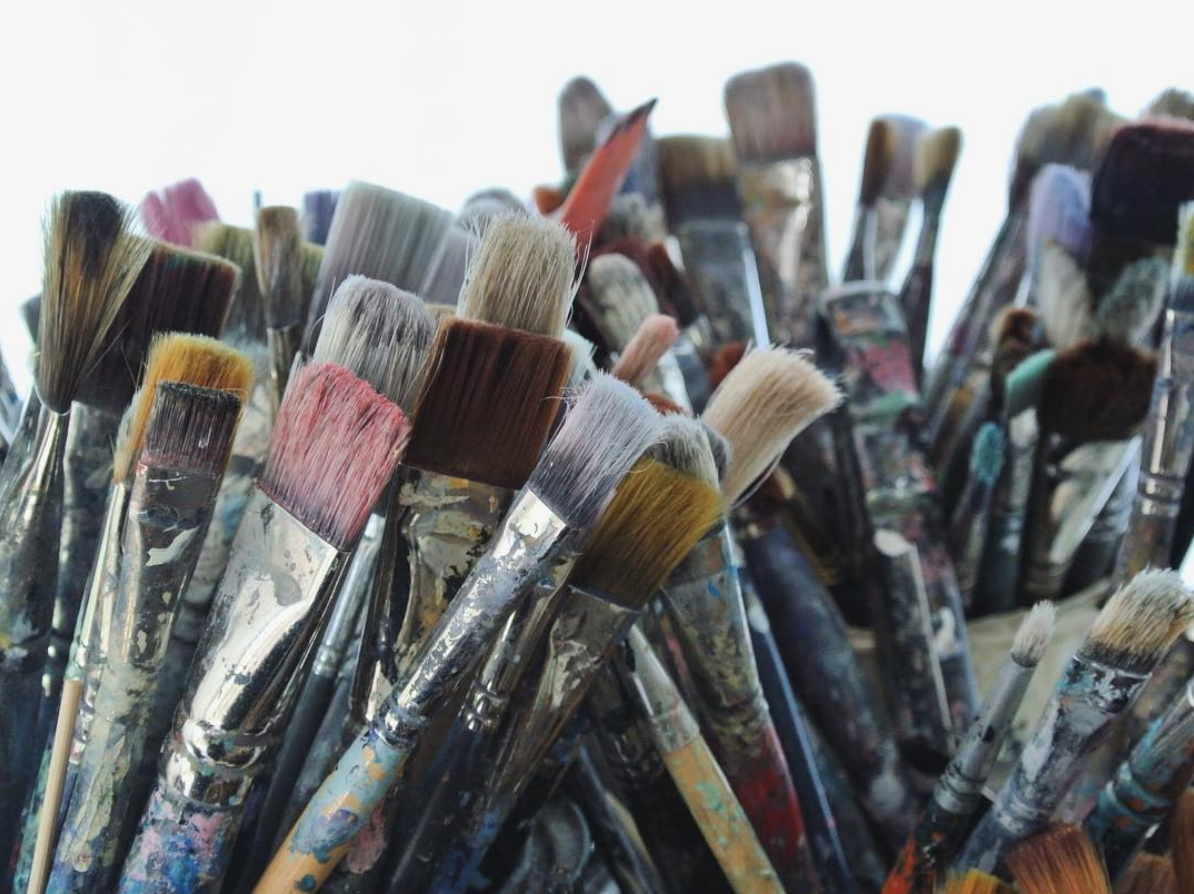Bevvy of Brushes
For those that are new to painting, the number of paint brushes available on the market right now can be mind-boggling. For more seasoned painters, we take our time checking out the brushes, feeling the weight of the handle, the bounce of the bristles and pondering if we really do need another brush. Brushes can range in shape, size, bristle and most definitely in price. And yes, there is a significant difference in the more expensive brushes and how they deliver the paint which can make a huge difference in the final result of your painting. Although premium brushes are not necessary for the beginner, choose a mid-way price point brush and you will likely not be disappointed. Looking after your brushes properly is paramount unless you are fortunate enough to have a bottomless wallet.
Brushes are personal for me. I have my favourites depending on what I want to do in my painting.
Sometimes I paint with tighter edges, and for this when I work in acrylics I use a flat synthetic bristle. They hold less water so, therefore, less drippy action. The bristles tend to hold their shape more thus my edges can be clean.
For looser edges and swishy strokes, I like to use natural bristles. Think of all those yummy big action strokes in large abstract expressionist paintings – most likely a large natural fiber brush was used. Even natural fiber house paint brushes can do the trick but the hairs tend to fall out with all the maneuvering of the brush to canvas. Painting on canvas is very different than wall painting.
Although when I paint in both acrylics and oils I use both flat and rounds, flat brushes were originally created for acrylics, not oils. Natural bristles were traditionally used for oils so that the mineral spirit and oil did not eat through them. But I believe there are high-quality synthetics that are good for oils now too. I still prefer my natural bristles when oil painting. For acrylics, I use both.
There are three basic shapes for brushes: flats, rounds, and filberts. And then there is a special fine long bristle of around called line brushes. These are a handy option for creating lovely fluid lines, especially with fluid paints. They are also perfect for signing your name to your masterpiece. There are variations on flat brushes such as an angled brush and a fan brush which can help with soft blending ( fan) and sharp clean edges (angled). I personally don’t use either of these right now but not to say that I won’t at some point.
Every brush has its use in my studio at one time or another.
Some brands such as Liquitex, make ‘paddle’ brushes, these are shaped like a battle, no handle and are synthetic but decent quality indeed. They are also fun to experiment with. Because of the lack of handle, you manipulate the brush differently simply because of the way you must hold it.
For varnishing my completed acrylic paintings, I use a flat, soft, nylon brush as is gentle, delivers the varnish evenly and no bubbles are created. I use Golden UV varnish (matte, satin or gloss).
One of my favourite projects, when I was teaching groups, was one I called the ‘walkabout’. I would have students move in one direction to the next artist’s station, changing to the next every 15 minutes until everyone had a go at each of the many canvases. Each student left their canvas and all their supplies at their original station. As the students moved around the studio everyone was able to test the different quality of materials each other were using. Immediately, notebooks came out and students would write the materials they liked that other student. The next day would see an onslaught of my students at the art shops purchasing their new favourite materials.
XO – M
